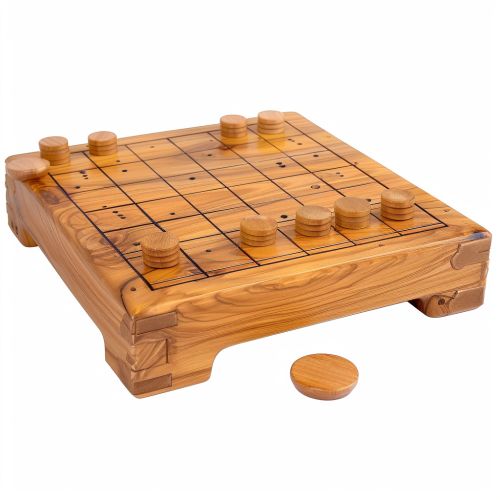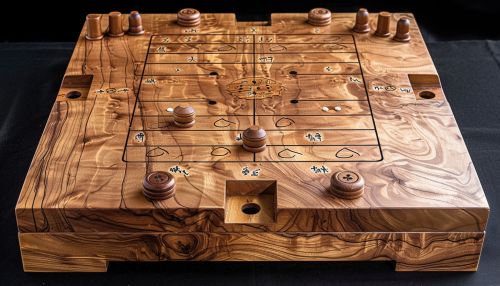Chaturanga
Origins and History
Chaturanga is an ancient board game, believed to be the common ancestor of the board games chess, shogi, sittuyin, janggi, and xiangqi. The game was played in India as early as the 6th century AD. The term 'Chaturanga' is Sanskrit, translating to 'four divisions of the military' - infantry, cavalry, elephants, and chariotry, represented by the pieces pawn, knight, bishop, and rook respectively.


Gameplay
The game is played on an 8x8 uncheckered board, called Ashtāpada. It has two players, each with a set of 16 pieces. The objective of the game is to checkmate the opponent's king, similar to modern chess. However, the movements of the pieces are different, and the game does not have the queen piece that we see in the modern game of chess.
Pieces and their Movements
The pieces in Chaturanga and their movements are as follows:
- Pawn (Padàti): Moves one step forward and captures one step diagonally forward, similar to the pawn in modern chess.
- Knight (Ashva): Moves two steps in one direction and one step at a right angle, similar to the knight in modern chess.
- Bishop (Gaja): Moves two steps diagonally, jumping over the intervening square. The bishop does not share the same move as the bishop in modern chess.
- Rook (Ratha): Moves any number of vacant squares vertically or horizontally, similar to the rook in modern chess.
- King (Raja): Moves one step in any direction, similar to the king in modern chess.
- General (Mantri): Moves one step diagonally, similar to the king in modern chess. The general is the precursor to the queen in modern chess, but it does not share the queen's powerful movements.
Variations
There are several variations of Chaturanga, including four-player Chaturanga, which is played on a larger board and has four sets of pieces. Each player controls one set of pieces. The players sitting opposite to each other form a team and the objective is to checkmate one of the opponent team's kings.
Influence on Modern Board Games
Chaturanga had a significant influence on the development of many modern board games. The game was introduced to the Islamic world in the 7th century and was modified to become Shatranj, the direct predecessor to modern chess. The game was also introduced to the Far East where it evolved into xiangqi in China, shogi in Japan, and janggi in Korea.
